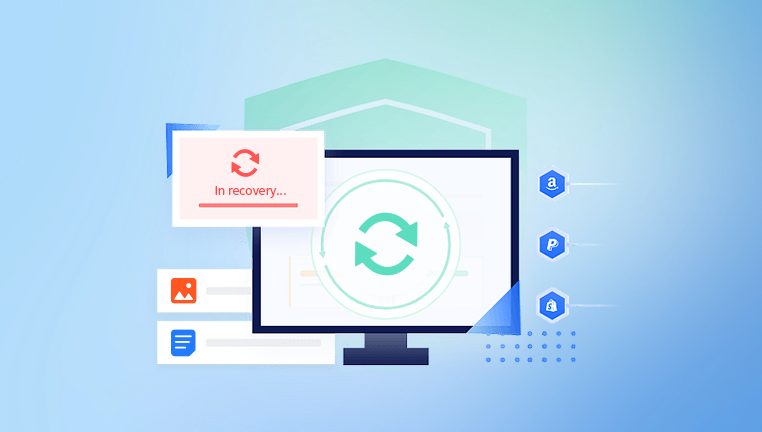Few things cause more panic for a computer user than realizing they’ve formatted the wrong storage device. Whether it’s a hard drive with years of work files, an external drive filled with family photos, or an SD card from a camera, the sinking feeling is universal. Most people understand that a quick format doesn’t completely erase data and can often be undone. But when it comes to a full format, the situation is far more daunting.
At first glance, the answer seems simple: a full format is supposed to erase everything, making recovery impossible. But as with most things in computing, the reality is more nuanced. Recovery after a full format depends on several factors, including how the format was performed, the type of storage device, the operating system, and whether new data has been written.
By the end of this detailed guide, you’ll have a clear understanding of whether full format recovery is possible, what options exist, and how to maximize your chances of success.

Chapter 1: What Formatting Does
To understand recovery potential, it’s essential to know what happens during formatting.
A file system (NTFS, FAT32. exFAT, APFS, EXT4. etc.) is the organizational structure that lets your operating system know where files are stored on a disk. Formatting sets up or resets this structure.
Quick Format: Only erases the file allocation table (the "index") but leaves data sectors intact.
Full Format: In modern operating systems (Windows Vista and newer), full format erases the index, scans for bad sectors, and overwrites all data sectors with zeros.
That last step overwriting sectors is the reason full format recovery is generally considered impossible with standard tools.
Chapter 2: Quick Format vs. Full Format
Let’s clarify the differences:
Quick Format
Deletes the file index.
Leaves file data untouched until overwritten.
Recovery is often successful using specialized software.
Full Format
Deletes the file index.
Performs a sector-by-sector overwrite with zeros (on modern systems).
Recovery is nearly impossible without advanced forensic methods.
👉 Key Point: A full format on Windows XP or older systems may not overwrite sectors. In those cases, recovery is possible, similar to quick format recovery.
Chapter 3: Why People Use Full Format
Full format isn’t as commonly used as quick format, but there are situations where it’s preferred:
Drive Health Check – Full format scans for bad sectors.
Secure Erasure – People use it when they want to make sure old data isn’t easily recoverable.
Reinstalling OS – Full format prepares a “clean slate.”
Selling or Disposing of a Drive – Prevents casual recovery by future users.
Chapter 4: Can You Recover Data After Full Format?
The answer depends on how the format was executed.
Scenario 1: Old Operating Systems (Pre-Windows Vista)
Full format did not overwrite sectors.
Recovery was possible using data recovery software.
Scenario 2: Modern Operating Systems (Windows Vista and later, macOS, Linux)
Full format writes zeros to all sectors.
This overwriting destroys original data.
Standard recovery software cannot restore overwritten data.
Scenario 3: SSD Drives
Most SSDs use the TRIM command, which actively clears blocks when they’re marked free.
This makes recovery after full format virtually impossible.
👉 Conclusion: Recovery after full format on modern systems is extremely unlikely.
Chapter 5: The Science Behind Overwriting
Why does overwriting make recovery so difficult?
A file on a disk is just a series of magnetic or electronic states representing binary data (1s and 0s).
If data is only marked as deleted (quick format), the “map” is gone but the data remains.
If data is overwritten (full format), the physical bits are changed to new values.
Once a sector is overwritten, the original information is gone.
Chapter 6: Myths About Full Format Recovery
There are many myths floating around:
“Special software can always recover formatted data.”
False. If sectors are overwritten, no software can restore them.
“Magnetic forensics can recover overwritten data.”
In theory, old studies suggested residual magnetization could be analyzed.
In practice, modern drives are too dense; overwritten data cannot be reconstructed.
“Professional labs can always recover formatted drives.”
False. Even forensic labs cannot recover overwritten data. They can only recover in cases where overwriting did not occur or was incomplete.
Chapter 7: When Recovery Is Still Possible
Although full format is usually final, there are exceptions:
Older Drives or Systems – As mentioned, pre-Vista Windows did not overwrite.
Interrupted Full Format – If the process was stopped mid-way, some sectors may remain intact.
Misinterpreted “Full Format” – Some third-party tools label a “full format” but only rebuild the file system (similar to quick format).
Partition-Level Formatting – Sometimes only the file system of a partition is rebuilt while actual data blocks remain.
Chapter 8: Tools for Attempting Recovery
Drecov Data Recovery
When a storage device undergoes a full format, many users assume their files are permanently erased. Unlike a quick format, which only removes the file system index, a modern full format usually goes further by scanning for bad sectors and overwriting every storage block with zeros. This process is designed to make recovery extremely difficult, if not impossible, using ordinary software.
However, Drecov Data Recovery provides an advanced approach for cases where a full format may not have completely overwritten the drive. On certain older systems (such as pre-Windows Vista) or in situations where the full format was interrupted before completion, a significant amount of data may still remain intact. Drecov Data Recovery uses deep-scan algorithms and raw data carving to analyze every sector of the device, identifying traces of recoverable files.
The software works across a variety of storage devices—HDDs, SSDs, external drives, USB sticks, and memory cards. While full format recovery success is not guaranteed, Drecov Data Recovery increases the odds by:
Scanning at a sector level to locate residual file fragments.
Rebuilding file headers and metadata where possible.
Restoring files in their original formats, including documents, photos, videos, and archives.
It’s important to note that on modern systems, where full formats perform true zero-overwrites (especially with SSDs using the TRIM command), recovery may be impossible. Still, for drives formatted under older conditions or cases of incomplete formatting, Drecov Data Recovery can often retrieve crucial files that might otherwise be lost.
In short, while a full format typically signals permanent erasure, Drecov Data Recovery offers one of the best chances of recovery when traces remain, combining accessibility with professional-grade recovery techniques.
Chapter 9: Professional Recovery Services
When data is critical, professional labs are the last resort.
They use clean rooms and hardware-level tools.
They may succeed if the format did not include overwriting.
However, if data has been truly overwritten, even they cannot restore it.
Costs can range from $300 to $2.000 or more, depending on complexity.
Chapter 10: Prevention Is Better Than Cure
Since full format recovery is usually impossible, prevention is essential.
Double-Check Drive Letters – Before formatting, confirm the target device.
Label Drives Clearly – Avoid confusion between external drives.
Use Quick Format Unless Secure Erase Is Required – Quick format is safer for accidental recovery.
Enable Backups – Windows File History, macOS Time Machine, or cloud services.
Cloning for Testing – Clone a drive before experimenting with formats.
Chapter 11: Alternatives to Full Format
If your goal is simply to refresh a drive or clear errors, consider alternatives:
Quick Format – Faster and safer for accidental mistakes.
Check Disk (chkdsk) – Fixes errors without erasing.
Drive Wiping Tools – If your goal is secure erasure, specialized tools (DBAN, CCleaner Drive Wiper) are more reliable than full format.
Chapter 12: Frequently Asked Questions
Q: Is full format recovery 100% impossible?
On modern systems, yes. On older systems, it may still be possible.
Q: Can forensic agencies recover overwritten data?
No. Once overwritten, data is gone.
Q: What about SSDs?
With TRIM enabled, full format recovery is impossible.
Q: Can partial files be recovered after interrupted full format?
Yes, depending on how much of the drive was overwritten.




